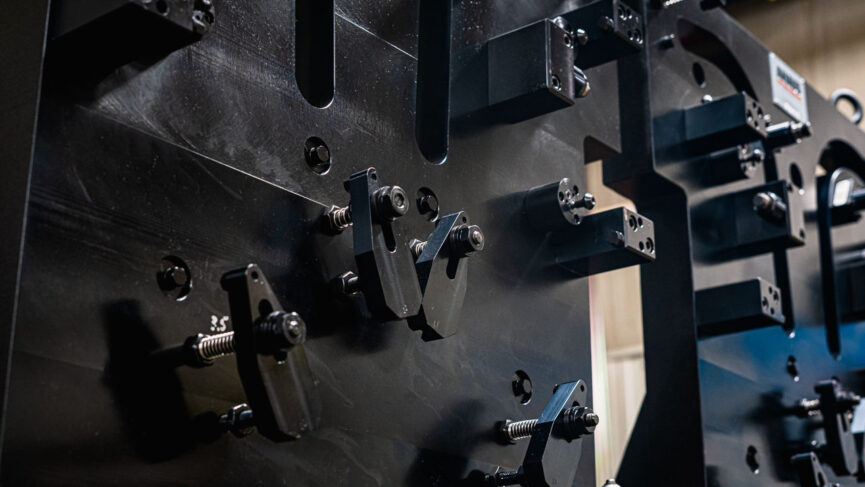A variety of factors come into play in the manufacturing and processing of a part. The complexity or simplicity of a part’s design, the number of parts required and how a part is to be tooled are all considerations. But one of the most critical aspects in a part production strategy is determining how it will be held in place as work is being performed on it.
Manual, pneumatic and hydraulic workholding fixtures are the most commonly-used workholding solutions. Although there are many benefits to using “power” devices, manual fixtures still have their place, and are advantageous in certain settings.
Manual vs. Power Workholding Fixtures
Manual workholding devices such as clamps, chucks and vices are low-cost fixtures that provide a good degree of flexibility. They work well in many low-volume production situations. They can also be quite effective in simple to relatively complex part processing endeavors where operators are experienced in their use.
However, in situations where certain sections of a part are hard to reach or are oddly angled, manual fixtures may be difficult to use, especially on longer production runs. Under these conditions, operators are more susceptible to fatigue or injury.
Conversely, powered and automated workholding systems are consistent and repeatable, no matter what the production volume. They take less effort to operate and can be controlled remotely, greatly reducing the exposure of workers to hazards associated with repetitive motion and reaching over or around equipment.
Custom hydraulic workholding fixtures and custom pneumatic workholding fixtures can be tailored to meet the processing specifications of just about any part. Clamping speeds and production cycles are much faster with powered workholding devices, and they automatically adjust where varying levels of force are needed.
Hydraulic and pneumatic fixtures offer much more control than manual fixtures, require fewer workers to operate and keep errors and defects to a minimum. They are stable, reliable and allow for increased productivity, making them a cost-effective and extremely efficient solution for just about any workholding need.


